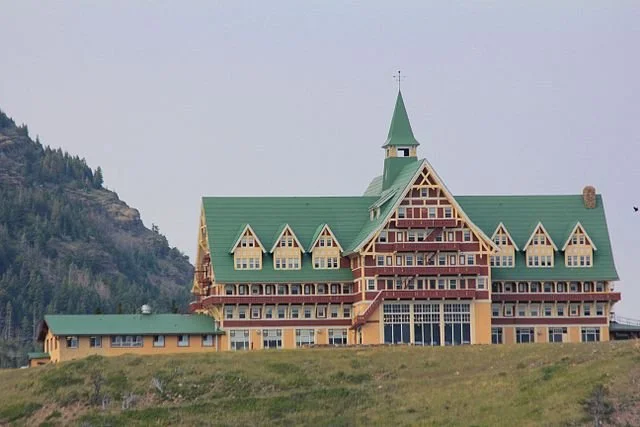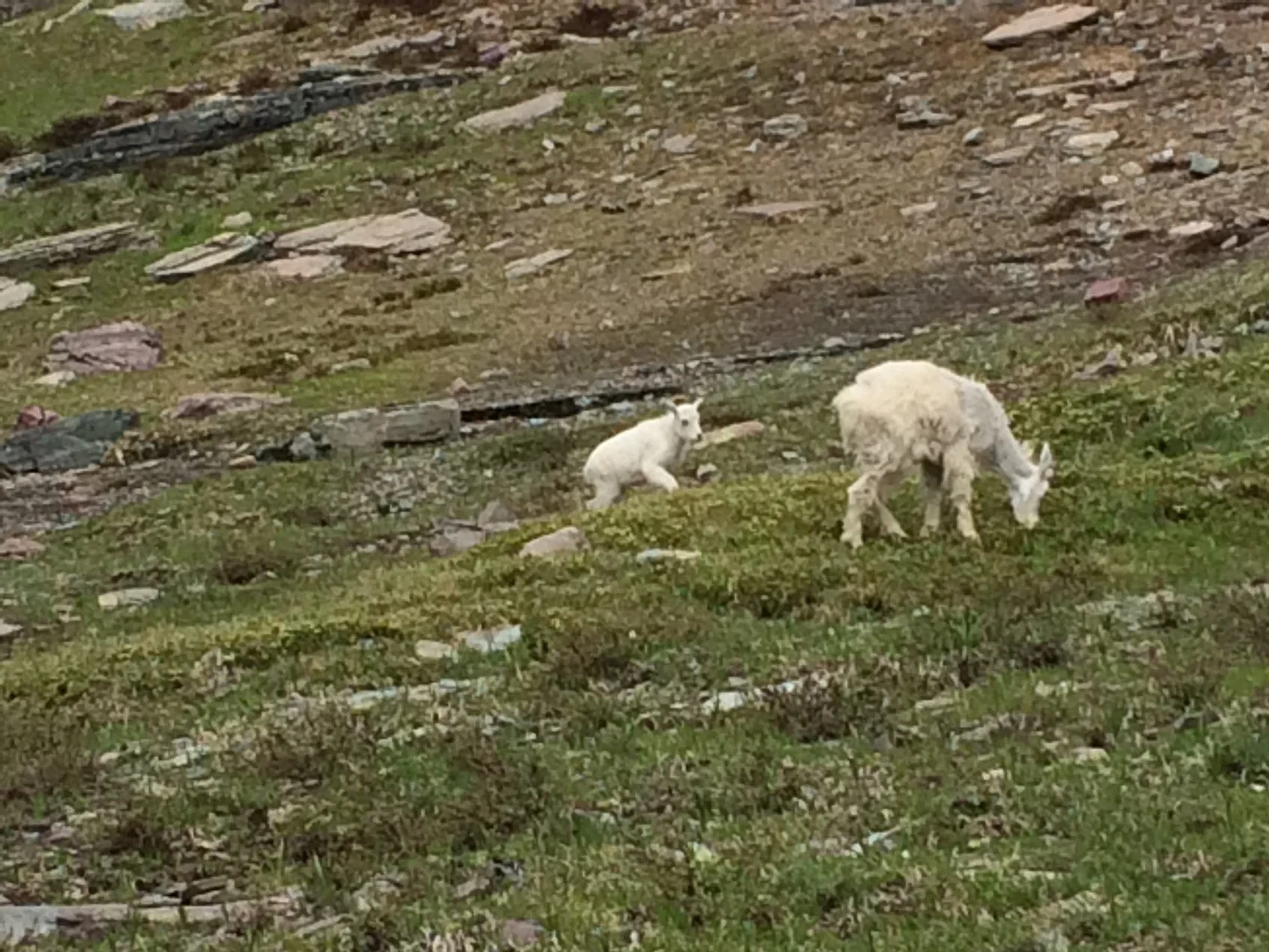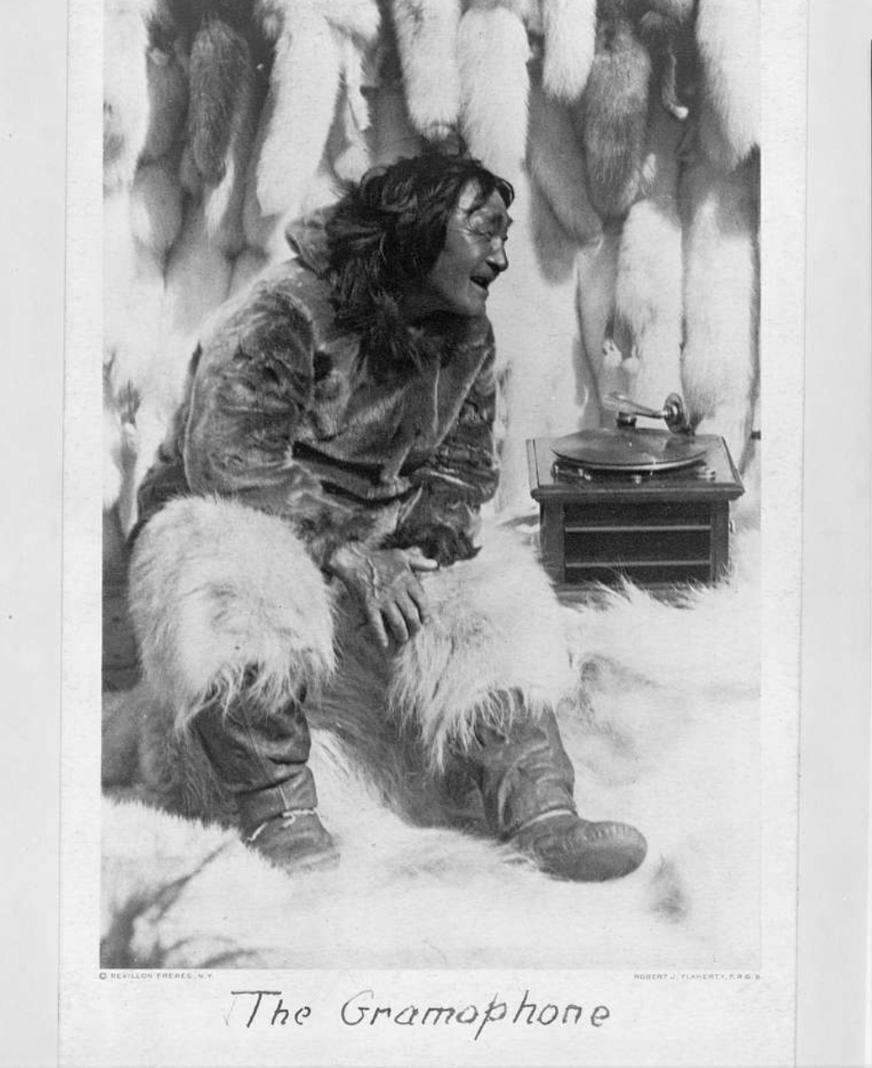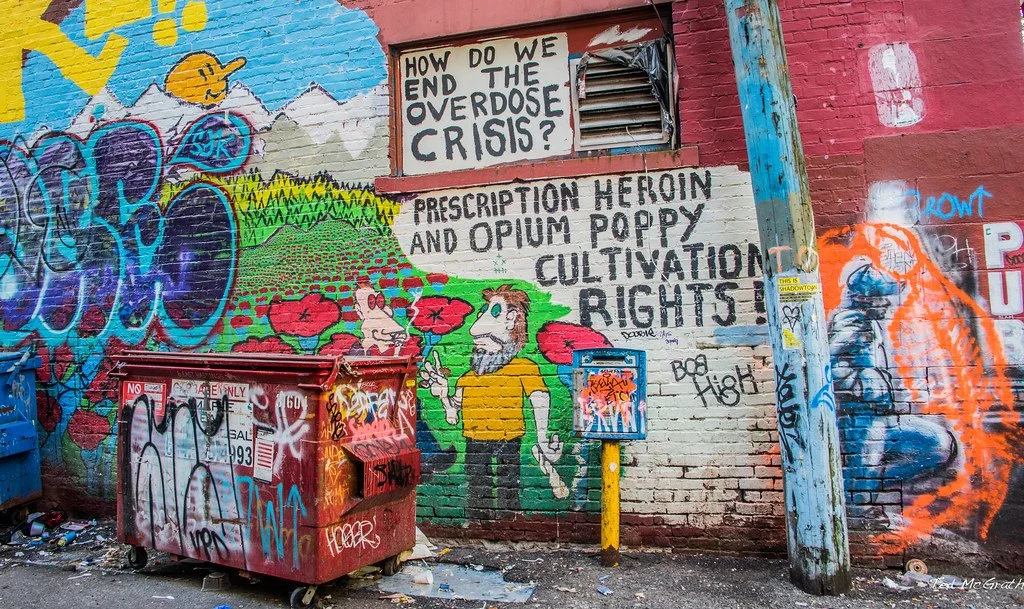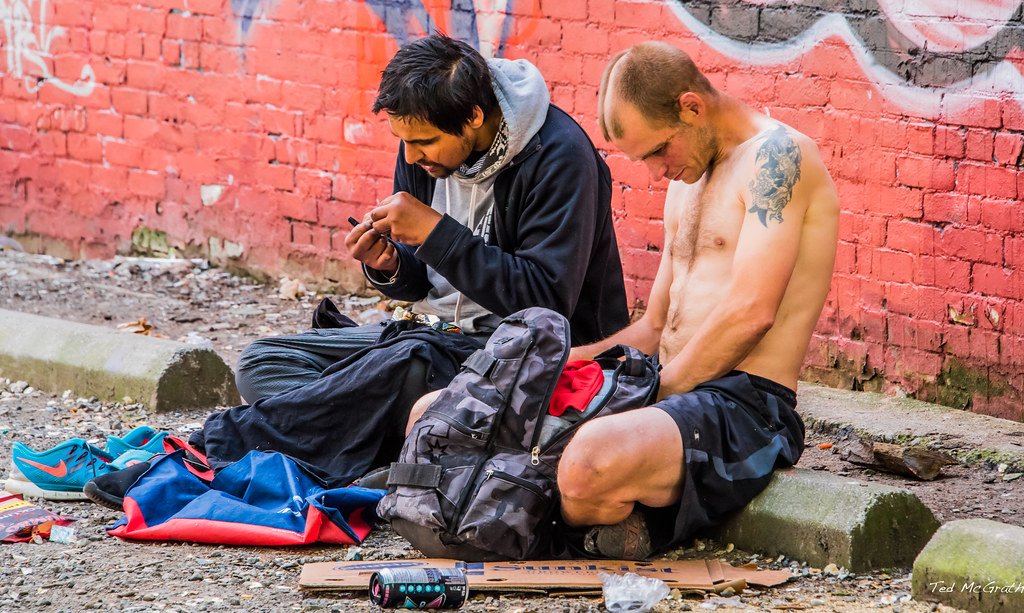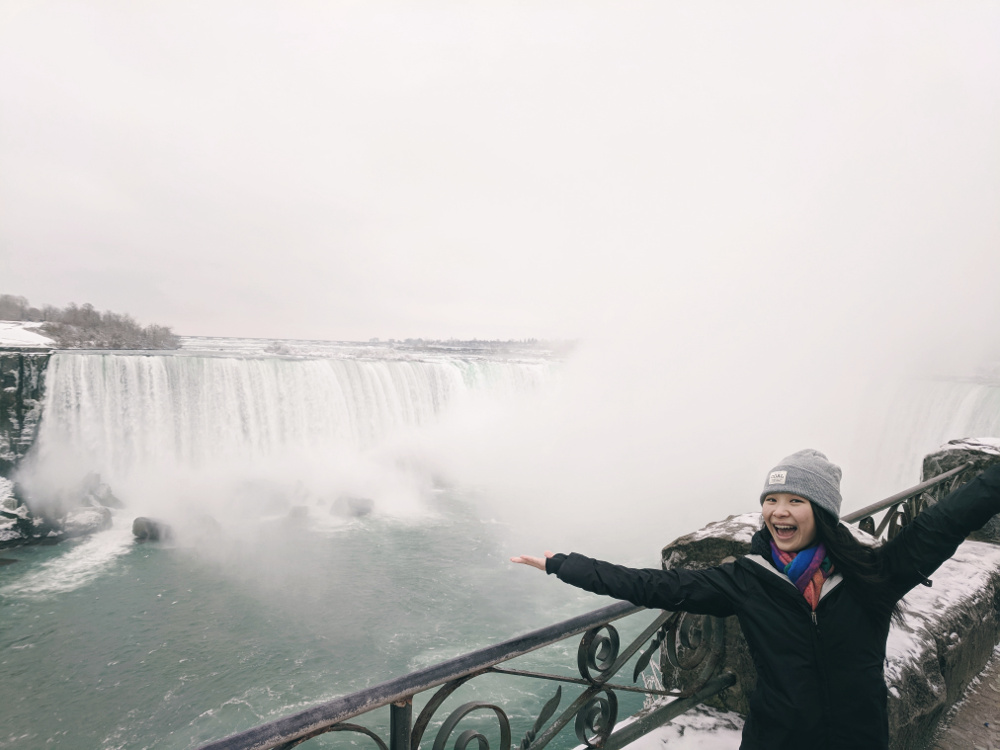Explore the timeless tradition of skating through Canada's winter wonderland, where communities bond on outdoor rinks like the world-renowned Rideau Canal, despite the challenges of climate change.
Read MoreTravel Through Time in the Canadian Rockies
Explore millions of years of natural history from ghost towns to Indigenous communities.
Morning in Banff National Park. Sergey Pesterev. CC BY-SA 4.0
Canada is home to a wide variety of beautiful landscapes, natural vistas and a rich history of human habitation. From cowboy ghost towns to Indigenous communities, people have been living in the great snowy mountains of Canada for centuries. And there’s nowhere better to experience the best of both worlds than in Canada’s iconic Rocky Mountains.
Hundreds of years ago, the Rockies were home to several First Nations tribes, including the Ojibwe, Cree and Mohawk peoples. But their history goes back even further; the oldest archaeological record of human inhabitants in these mountains dates back 13,000 years. Due to European colonization, Indigenous tribes lost their territory, but the memory of their traditions is still being carried on today thanks to companies like Painted Warriors. From horseback riding and archery lessons to natural navigation and animal tracking — the ranch provides visitors with an experience inspired by the heritage and traditions of local Indigenous communities. During the warmer months, visitors can enjoy guided or independent hikes through the mountains. In wintertime, the ranch provides snowshoe tours of the surrounding area. An excellent camping and glamping location, Painted Warriors Ranch is also dedicated to providing a historically accurate and informative experience by respecting and carrying on the traditions of the First Nations tribes.
In the heart of a 1920s ghost town rests a different piece of history — the one-of-a-kind Last Chance Saloon. Initially built as a coal mining operation, Bankhead, Alberta eventually grew into a full-fledged community. However, when the mine stopped producing, the town was left more or less abandoned. The Last Chance Saloon is particularly emblematic of the whole experience. Filled with antique mining equipment and absolutely covered in bullet holes, this classic bar now features themed hotel rooms and a functioning smokehouse.
The remains of Bankhead’s lamphouse, where miners would store their equipment. Dietmar Rabich. CC BY-SA 4.0
Human history is not the only era present in the Rocky Mountains — our ancient predecessors can also be found hiding among the rocks. Dinosaur Provincial Park, one of the best locations to find dinosaur fossils (as recognized by UNESCO), offers visitors a one-of-a-kind experience. Walking the same lands as giant reptiles did millions of years ago, visitors may find the remains of these massive creatures hidden away in the mountainside. The park hosts both family tours and slightly more challenging guided hikes (the park strongly recommends registering for these events in advance, as they frequently sell out).
The unique landscape of Dinosaur Provincial Park. XeresNelro. CC BY-SA 4.0
Human and animal history is only one part of a trip to the Canadian Rockies; sprawling Banff National Park is the real heart of these mountains. Featuring countless scenic hikes, brilliant lakes and nature preserves, this park is home to innumerable incredible experiences. From the Yamnuska Wolfdog Sanctuary (home to several packs of unique wolf-dog hybrid animals) to the legendary Cave and Basin (a beautiful thermal spring oasis), this massive national park offers a diverse range of natural splendor.
Banff National Park is dotted with scenic hiking trails of all varieties. Dietmar Rabich. CC BY-SA 4.0
Charting millions of years of history in some of the most beautiful environments on Earth, there is no shortage of fantastic experiences in the Canadian Rockies. And with plenty of sights and activities available year-round, the Rockies are the perfect destination regardless of the season.
Ryan Livingston
Ryan is a senior at The College of New Jersey, majoring in English and minoring in marketing. Since a young age, Ryan has been passionate about human rights and environmental action and uses his writing to educate wherever he can. He hopes to pursue a career in professional writing and spread his message even further.
Hiking in the Canadian Rockies: The Natural Magic of Waterton National Park
Find some of the best hikes in the world on the southern Canadian border.
Waterton Lakes seen from the Prince of Wales. Sean Tseng, CC BY-SA 4.0
Uniquely positioned as the only national park in both the United States and Canada at the same time and known as an International Peace Park, and the first of its kind, Waterton is a once-in-a-lifetime experience. During my two weeks there, I discovered hidden waterfalls, hiked over miles of snow and ice, and took a step back into Canadian history.
Our first destination was the Prince of Wales Hotel. Positioned on top of a hill overlooking the beautiful Upper Waterton Lake, this building was constructed in 1927 and has remained one of the most recognizable landmarks in the entire park. The interior is a classic 20th-century hotel, complete with a manually-operated crank elevator. Niagara, the restaurant within the hotel, holds high tea in the drawing room in the afternoons, bringing guests back to Victorian England, complete with pastries and ornate British tea sets.
The Prince of Wales Hotel. Royalbroil, CC BY-SA 3.0
Heading down along the steep path on the hillside, we arrived in the small town of Waterton on the edge of the lake. The sleepy mountain village was a lovely experience; it felt like taking a trip back through Canadian history, complete with uniformed mounties patrolling the streets. The town opens up onto a variety of hiking trails into the surrounding mountains and along the shores of the lake.
Taking one of these mountain paths, we climbed up and around the foothills and into a gorgeous pine forest. Making our way along the rocky outcroppings and winding paths, we found ourselves facing a thundering waterfall only a few minutes after we started out. This would prove to be the standard for our trip; it seems like everywhere you look, there’s another beautiful vista or secret wonder waiting to be discovered.
Just a few minutes’ drive from the hotel, we arrived in Red Rock Canyon, a small but beautiful gap in the earth lined by small brush and occasionally frequented by coyotes. Thankfully, we didn’t run into any of them on our trail, but at the viewing spot at the end of the short hike we spotted one scampering along the bank of the small river far below us. This canyon is also a known visiting spot for both brown and grizzly bears; their presence in the park has led seasoned travelers to suggest carrying noisemakers or regularly shouting, “Hey, bear!” to avoid taking the huge animals by surprise and risking an attack.
After a few days enjoying the sights of Waterton, we made our way further west and crossed the border back into the US’s Glacier National Park to visit some of the last remaining glaciers in North America. One of these ancient ice giants, Jackson Glacier, is visible from the side of the famous Going-to-the-Sun Road. This winding path along the side of the Rocky Mountains sits at an elevation of around 6,000 feet and is lined with waterfalls and scenic vistas. If you’re lucky, you can spot herds of bighorn sheep climbing the hills alongside the road; with their unique hooves, they can cling to a sheer rock wall as if it was flat ground. And as long as the weather is good, you can clearly see the massive ice sheet that carved out the valleys below, suspended between two peaks in the far distance.
Jackson Glacier as seen from Going-to-the-Sun Road. MONGO, CC BY-SA 4.0
Further along the road, we came to our next stop; a trailhead that led out into a massive field of snow. With bandanas and wool hats to resist the biting cold, we started out across what looked like a scene straight out of a Hallmark movie. But after a few feet, we discovered that there was actually a wooden walkway—about three yards beneath us. This massive field of snow was in reality a mountain of its own; it was several yards deep and miles wide in all directions.
After picking our way along the often slippery surface of the snowy mountain, we found ourselves in another forest, this one populated by tons of wild mountain goats. Groups of hikers stood along the roped-off path, snapping photos of the adorable baby goats as they rooted through the snow and brush for food. We also spotted some wolverines, keeping their distance from us as they hunted for prey along the upper slopes of the mountain.
A mountain goat with its kid. Photo by author.
Once we had descended to our car again, we made our way back north to our last stop: Many Glacier Hotel, overlooking Swiftcurrent Lake. After dropping off our things, we hopped on board one of the boating tours. We were taken across the lake to the opposite shore, where we briefly hiked our way through the foothills before hopping on another boat and circling back around. During our cruise, we were given the history of the area, from the area’s original residents, the Cheyenne and Blackfoot tribes, to the park’s founding in 1910.
Waterton and Glacier are some of the most beautiful national parks in the world; despite being overshadowed by Yellowstone and the Grand Canyon, there is nothing quite like hiking across miles of snow and viewing the ancient glaciers that formed the landscape of America and Canada. The wildlife, the environment and even the towns of Waterton are steeped in natural beauty and wonder; anyone who enjoys hiking and loves a good view should make their way to Waterton once in their lives.
There are many ways to visit and stay in Waterton. The closest airport to the park is Kalispell (FCA), although for some Calgary International Airport (YYC) may be preferable. The Prince of Wales Hotel from this article is open for online bookings in the spring and summer at their website, and other lodgings are bookable here and on other sites you can find through Google Hotels. Prices in the area generally range from around $130 to $150 per night.
Ryan Livingston
Ryan is a senior at The College of New Jersey, majoring in English and minoring in marketing. Since a young age, Ryan has been passionate about human rights and environmental action and uses his writing to educate wherever he can. He hopes to pursue a career in professional writing and spread his message even further.
Uncontrolled Burn: Canada’s Devastating Wildfires
Thousands of wildfires, miles of scorched forests and colossal plumes of smoke are threatening Canada on all fronts.
Forest fire at night. U.S. Forest Service, public domain
Canada is no stranger to wildfires. According to the Canadian National Fire Database, over 8,000 fires occur every year, burning over 2 million hectares of land. The highest risk period for fires starts in April or May and lasts all the way through September or October, with hold-over fires potentially burning well into winter.
But recently, fires have become more and more frequent earlier in the year. These early fires have also been growing in severity and damage, which should only happen well into the summer. Canada has endured over a thousand fires in 2024 alone, with 104 currently raging as of late May. Most are relatively under control thanks to quick responses from fire teams, but about a seventh are registered as “uncontrolled.” Despite the best efforts of local fire companies and government action, these fires have devoured thousands of hectares of land and are currently threatening several cities across the country.
The Parker Lake fire, named for its apparent origin point, caused thousands of citizens of Fort Nelson in British Columbia to flee their homes. At that time the fire was already roughly 3 square miles in size; the long period of dry weather, coupled with strong winds, caused the fire to grow out of control, which prompted evacuation orders on May 11th. Parts of Alberta have also been given orders to prepare for evacuation as other fires steadily approach.
In addition to the threat posed by the blazes themselves, the smoke produced by the constant burning has blanketed most of Canada and is beginning to drift south into the midwestern United States. This smoke can cause serious reactions in those with existing respiratory illnesses and even be harmful to the lungs of healthy individuals. Given the severity of 2023’s wildfire season, we can expect a tremendous amount of smoke this year as well.
There are many possible causes for wildfires, ranging from the carelessness of individual hikers or campers to the climate itself. Higher global temperatures can cause more frequent flare-ups, long-lasting droughts can leave forest floors incredibly dry and flammable, and warmer winters leave less snow behind, resulting in even dryer conditions. Additionally, zombie fires—blazes that have smoldered underneath the snow over winter only to reemerge after the spring thaw—have increased the number of threatened communities.
How You Can Help
Fire season has only just begun in Canada and the nation is already being battered from all sides. Conditions are only expected to worsen as the temperatures rise and droughts linger; more evacuations are also expected as a result. However, several charities have already begun donating to the firefighters working to combat the blazes, as well as the many displaced citizens. Sites such as Global Giving and the Canadian Red Cross are excellent ways to help offset the devastation wreaked by the hundreds of wildfires.
Ryan Livingtston
Ryan is a senior at The College of New Jersey, majoring in English and minoring in marketing. Since a young age, Ryan has been passionate about human rights and environmental action and uses his writing to educate wherever he can. He hopes to pursue a career in professional writing and spread his message even further.
The First Documentary? Or an Utter Falsehood?: "Nanook of the North"
Cemented as a piece of cultural iconography of the Inuit Peoples, "Nanook of the North" exemplifies how art and exploitation can coexist.
“Nanook” Harpoon Scene, Musee McCord Stewart, CC0.
A series of onscreen intertitles dash and dance across the screen at the start of director Robert Flaherty’s 1922 documentary "Nanook of the North." Viewers are told of the harsh cold in Eastern Canada's Ungava Peninsula and, more specifically, the difficult process of filming under these conditions. Soon, a man with a fur coat and weathered skin occupies the screen, making direct eye contact with the camera as wind ruffles the fur of his coat. His name is Nanook—or so we are told.
"Nanook of the North" is one of the most cited and celebrated films in history; it is a staple in movie buffs’ collections and academic classrooms alike. And, the film was one of the first twenty-five films to be chosen for the Library of Congress’s national film registry. The film centers on a man named Nanook and his family as they hunt and live in the freezing temperatures of Eastern Canada through both summer and winter. Critics and historians alike have deemed Nanook the “original” documentary film for its then-groundbreaking ethnographic preservation and depiction of Inuit life and culture. Perhaps just as importantly, Flaherty himself has gone down in history as a legendary dramatist and pioneer of the documentary genre.
"Nanook of the North" original promotional poster. Wikimedia Commons. CC0.
Years later, however, the film is now shrouded in mystery, infamy and controversy. Although "Nanook" is groundbreaking, it is also misunderstood by many. Careful watchers will spy an explanation in one of the first intertitles that Nanook was a composite character created by Flaherty to typify his perception of Inuit life. For much of the twentieth century, people considered the portrayal to be both real and accurate. But, as the film itself makes clear, Nanook and his entire on-screen family were characters. The character of Nanook is played by a man named Allakariallak, and his “wife” Nyla is actually a woman named Alice. The suspenseful harpoon hunting scenes and costuming of the characters is both dated and staged.
Despite being well-received upon its release and celebrated continuously since, "Nanook of the North" is both fabricated and anachronistic. Some modern theorists question if the film should even be considered a documentary at all. But, at the same time, documentary film is not solely the reflection of reality and preservation of truth; many documentaries today are simply a depiction of the filmmaker’s worldview and are similarly underlined by personal bias. And, consequently, Nanook is a reflection of Flaherty's bias and life experiences. Flaherty’s father was a mining engineer and geologist, and his mother encouraged Flaherty’s flair for the arts. Moreover, while growing up in Iron Mountain, Michigan near the border of Canada, Flaherty interacted with American traders and trappers as well as Indigenous peoples who also lived near or on the United States-Canada border. His childhood perception of these peoples frame the plot and characterization of Nanook’s family as well as the traders they meet, which were inaccurate by the time of the film’s 1922 release. Flaherty frames himself as an explorer and discoverer when, in reality, by 1922 many Inuit people already used rifles and incorporated western clothing into their outfits. In short, Flaherty’s depiction of Nanook and his family is a romanticized depiction of Inuit culture and life.
Robert J. Flaherty. Arnold Genthe. CC0.
But, in a pre-internet age, the audience had no idea that these images were manipulated and romanticized — they had no way of doing their own research because there were few if any realistic depictions of Inuit life in readily available media. What resulted was “Nanookmania,” a craze among viewers that resulted in the appropriation of Inuit culture. And, although one could make the argument that Flaherty had no idea that this popularity would ensue, he took steps to market the film to profit from the inaccurate portrayal of these people. The fur company Revillon Freres sponsored Flaherty’s film, which featured Nanook and his family in outdated fur coats, as well as a large display of fur pelts at trading post scenes. In many ways, this inaccuracy was an early form of product placement.
“Nyla,” pictured in a fur. Musee McCord Stewart. CC0.
Beyond the marketing and fictional construction of characters in "Nanook of the North", many of the directorial choices both romanticize and exotify the Inuit actors featured in the film. The intertitle cards declare that Nanook and his family are “kindly, brave, and simple,” perpetuating the stereotype that Inuit people are an unintelligent yet loveable people and thereby infantilizing them.
Moreover, in a scene at the trading post, when one of Nanook’s children eats too much biscuit with lard, a white trader feeds the child castor oil and, miraculously, the child is better instantaneously. This scene exalts western medicine and, in turn, harmfully glorifies western ideals and technology. Additionally, while at the trading post Nanook, a grown man, plays with a record player, biting the vinyl and laughing. This scene not only makes a joke out of Nanook’s supposed unfamiliarity with that piece of technology, but also infantilizes him in the same vein as the stereotypical descriptions of the family at the beginning of the film.
The infamous Gramophone scene. Library of Congress. CC0.
Although "Nanook of the North"will forever be considered one of the first documentaries and a dramatic feat by director Robert Flaherty, it is important to note the inaccuracies and misappropriation that riddles the film. Primarily, the movie is a representation of Flaherty’s limited interactions with Inuit peoples, informed by his childhood memories. As "Nanook" lives on in infamy, it is crucial to acknowledge the drawbacks — intentional and not — in Flaherty’s directorial approach.
Carina Cole is a media studies student with a concentration in creative writing at Vassar College. She is an avid journalist and occasional flash fiction writer. Her passion for writing overlaps with environmentalism, feminism, social justice, and a desire to travel beyond the United States. When she’s not writing, you can find her meticulously curating playlists or picking up a paintbrush.
A Vast Wilderness: Visiting Northern Canada
The northern parts of Canada are extremely isolated and difficult to reach, but they are full of diverse landscapes.
Read MoreThe Decriminalization of Illicit Drugs in British Columbia
Canada has announced their plans to decriminalize small amounts of illicit drugs in British Columbia by January of 2023. They are hopeful this will lower high rates of overdoses.
Graffiti about drug decriminalization. Ted’s Photos. CC BY-NC-SA 2.0.
In British Columbia, Canada, where thousands of overdose deaths occur each year, officials have decided to try decriminalizing small amounts of illicit drugs. The illicit drugs in question include heroin, cocaine, opioids, methamphetamine and more. Residents of British Columbia 18 years or older will be allowed to possess a maximum of 2.5 grams of these drugs without penalty, a policy that will take effect in January of 2023. This policy comes from an exemption from the Controlled Drugs and Substances Act that makes these drugs illicit, which was granted to British Columbia for a three-year trial run.
Officials hope that by decriminalizing small amounts of these drugs, dependent users will feel less afraid of prosecution and stigmatization if they do decide to seek drug-related help. Further, by tackling rates of drug deaths as a public health issue, BC Government News says “the Province will create new pathways to support those seeking treatment.”
Since the height of the pandemic in 2020, British Columbia has struggled with high rates of illicit drug abuse and overdose deaths. In 2020, drug-related death rates rose into the two-thousands, a problem that since 2016 had been declared a public health crisis. Most of these deaths occur when drug users hide their addiction from friends and family, fearing the reaction or stigmatization that will come from their loved ones learning of their addiction.
By decriminalizing these drugs, Canada hopes to reverse this effect; Dr. Theresa Tam, Canada’s chief public health officer, wrote in a tweet: “Stigma and fear of criminalization cause some people to hide their drug use, use alone, or use in ways that increase the risk of harm. This is why the Government of Canada treats substance use as a health issue, not a criminal one.”
Street use in Vancouver. Ted’s Photos. CC BY-NC-SA 2.0.
The exemption to be instituted in 2023 has found support from family and friends of deceased drug users and was even supported by the police associations and chief coroner. Though some call for even further decriminalization – a policy that would expand the 2.5 gram limit to larger amounts – health officials in Canada believe 2.5 grams is a good trial starting point. Harm reduction is their main goal; British Columbia’s Provincial Health Official Dr. Bonnie Henry stated, “This is not one single thing that will reverse this crisis but it will make a difference.”
In requesting an exemption from the Controlled Drug and Substances Act, British Columbia also stated that drug-related felonies and arrests disproportionately affect already marginalized communities. In decriminalizing small amounts of drugs, the authorities will reduce punitive actions and may help to decrease the stigmas around drug use that cause people to hide their addictions.
Turning Point of Tampa has also stated that experts on drug incarceration have stated that imprisonment does not deter drug use, and problems such as substance abuse, mental health issues and fear of open drug use worsen when sentenced to prison time. Peer clinical adviser Guy Felicella told the New York Times, “Arresting me and incarcerating me for all those years for using drugs never stopped me once from using drugs — even when I went to prison. It didn’t do anything except create stigma and discrimination, shame,” which is the exact thing Canada is trying to end through decriminalization.
Hoping to reduce the stigma surrounding drug use that leads to deaths due to fear of judgment and sequentially more dangerous usage, Canada is waiting to see how this exemption in 2023 will reduce rates of drug-related deaths, and whether further decriminalization is needed.
To Get Involved:
The Canadian Drug Policy Coalition (CDPC) is an advocacy organization that is fighting against the harm caused by drug prohibition laws. Campaigning with a platform centered on decriminalization, the Coalition strives to reduce the high rates of drug overdose deaths in Canada. To learn more about the CDPC’s mission and to support their work, click here.
Ava Mamary
Ava is an undergraduate student at the University of Illinois, double majoring in English and Communications. At school, she Web Writes about music for a student-run radio station. She is also an avid backpacker, which is where her passion for travel and the outdoors comes from. She is very passionate about social justice issues, specifically those involving women’s rights, and is excited to write content about social action across the globe.
Canada Suspends Flights to Vacation Destinations as COVID Continues to Spread
An Air Canada plane at Montreal-Trudeau International Airport. Caribb. CC BY-NC-ND 2.0
On Jan. 29, Canadian Prime Minister Justin Trudeau announced that the government had reached an agreement with major airlines to suspend all flights to Mexico and the Caribbean until April 30, and updated COVID-19 safety precautions for returning travelers. Canada reported 4,690 daily cases nationwide on the day of the announcement, the majority of which came from Ontario and Quebec, the country’s two most populous provinces.
The suspension of flights was agreed upon by Air Canada, WestJet, Sunwing Airlines and Air Transat, representing four of the country’s largest carriers.
Trudeau likewise outlined new pandemic safety guidelines for travelers returning to the country. Starting the week of Feb. 1, all international passenger flights were restricted to arriving only in Vancouver, Toronto, Calgary and Montreal. Travelers also must take a PCR test upon arrival to Canada, and need to quarantine for up to three days in an approved hotel at their own expense while waiting for their test results.
The prime minister also alluded to further restrictions to be announced as soon as the end of the month.
“We will also, in the coming weeks, be requiring nonessential travelers to show a negative test before entry at the land border with the U.S., and we are working to stand up additional testing requirements for land travel,” Trudeau said.
Before the announcement, Canada already required that everyone arriving in the country present a negative COVID-19 test taken within three days of travel and self-isolate for 14 days.
The new changes come as travel between Canada and popular vacation destinations has continued despite the ongoing pandemic. The trend has been even more apparent in the U.S., where a number of major carriers have expanded flights to the Caribbean and Mexico in response to increased demand to the region at a time when airlines have closed routes to other parts of the country.
“[T]he safety of flying during the pandemic remains largely unknown”
Throughout 2020, travelers continued to vacation in Mexico and the Caribbean, evading pandemic safety guidelines and in some cases, such as with American college student Skylar Mack, violating quarantine laws in the destination countries.
To the government’s credit, the U.S. did begin requiring negative COVID tests for entry into the country on Jan. 26. However, the government has yet to limit flights out of the country to popular vacation destinations as Canada has done.
According to Vox journalist Abraar Karan, the safety of flying during the pandemic remains largely unknown, as data on in-flight spread is not readily available a year into the ongoing COVID-19 pandemic.
“In Canada, infections and exposures on flights are far more readily documented, with a nearly daily list of flights that had infected passengers,” Karan writes. “The U.S. would benefit from doing the same, although this needs to be coupled with rapid contact tracing as well.”
It is unclear yet as to whether or not the U.S. will follow Canada’s lead and adopt stricter pandemic travel policies. The State Department recommended on Jan. 26 that Americans limit their travel abroad, but stopped short of a full suspension.
“The Department of State is committed to helping U.S. citizens overseas who find themselves in dire situations, but that assistance is likely to be limited,” Bureau of Consular Affairs Acting Assistant Secretary Ian Brownlee said on Jan 26. “Our goal is to help people avoid those dire straits in the first place.”
Travel is expected to pick up around the globe as more people receive vaccines, many of which have begun to be distributed in the global north. For now, however, travelers from any country are highly recommended to evaluate the safety and necessity of their travel before leaving.
Jacob Sutherland
Jacob is a recent graduate from the University of California San Diego where he majored in Political Science and minored in Spanish Language Studies. He previously served as the News Editor for The UCSD Guardian, and hopes to shed light on social justice issues in his work.
New Brunswick Provides Unique Experiences on the Road Less Traveled
The J.C. Van Horne Bridge in Campbellton, New Brunswick. Dennis Jarvis. CC BY-SA 2.0.
When visiting Canada, travelers often opt for the cosmopolitan scenes of Toronto, the French culture of Quebec, or the beauty of Vancouver. But when planning a post-pandemic trip up north, one would be remiss to overlook the Maritime province of New Brunswick.
Located on the Eastern Seaboard between Nova Scotia and Quebec, and immediately north of Maine, is New Brunswick. The province of roughly 780,000 is Canada’s only officially bilingual province, with roughly two-thirds of New Brunswickers speaking English, one-third speaking French, and 34% being bilingual. This split is physically noticeable, with the English speakers living predominantly in the south and the French speakers living predominantly in the north.
The province is home to a rich cultural history as well as a number of world-renowned parks, beaches, and food and entertainment options.
A Brief History of Acadian Expulsion
A painting by Thomas Davies depicting the burning of the city of Grimross, a pivotal moment in the mass deportation of the Acadians by the British. Public Domain
The cultural split in New Brunswick is due to the province’s history of colonialism. In 1604, the first French colonizers arrived in what is now modern-day Nova Scotia and New Brunswick. The region became known as “Acadia,” and ownership was contested for several decades due to the growing influence of British provinces in New England, Prince Edward Island and the northernmost part of modern-day Nova Scotia.
After numerous wars, the British took control of Acadia in 1710. Many Acadians, descendents of the original French colonizers, were expelled from the region beginning in the 1750s after refusing to swear an oath of loyalty to the British monarchy. Many were deported back to France, while others were expelled to Louisiana and the Caribbean.
Many descendants of the original Acadians would slowly return to what is now New Brunswick throughout the following centuries, primarily in the villages along the province’s northern coast. In 2003, at the urging of Acadian representatives, Queen Elizabeth II issued a proclamation acknowledging the mass deportation, and established July 28 as a commemoration of what is now referred to as the Great Upheaval.
A Plethora of Experiences for All to Enjoy
A view of Centennial Park in Moncton, New Brunswick. James Mann. CC BY 2.0.
One of the most popular attractions in New Brunswick is the Acadian Coastal Drive. This roughly 450-mile route is marked with signs depicting an image of a sea star, an homage to the sea creatures that live in the warm waters off the Acadian Coast.
In driving along the route, travelers will be able to satisfy their wanderlust to its full extent. A stop at the Kouchibouguac National Park brings beaches with the warmest saltwater north of Virginia. The Village Historique Acadian is a large, open-air museum that showcases Acadian history for the French Canadians who historically resided in New Brunswick and neighboring Nova Scotia.
Additionally, no trip along the Acadian Coastal Drive would be complete without a stop for seafood. Lobster rolls at La Homard Mobile, raw oysters at La Maison Beausoleil and sushi at Mitchan Sushi provide some of the best food in the province.
But the Acadian Coastal Drive is merely one of many amazing experiences available to travelers in New Brunswick. The province is home to some of Canada’s best performing arts outlets, including Music New Brunswick, an organization that hosts concerts and festivals around the province, Symphony New Brunswick, an orchestra that has run for 36 seasons, and Theatre New Brunswick, one of Canada’s most prominent regional theater companies.
A visit to the Mount Carleton Provincial Park in New Brunswick’s interior is a must for any nature lover. The park’s 42,000 acres of untouched wilderness are home to over 100 species of birds and 30 species of mammals, as well as a number of rare plants. The park is also a popular spot for hiking, with Mount Carleton, Mount Head and Mount Sagamook being the highest peaks in Canada’s Maritime provinces.
Further south is the city of Saint John. Located along the Bay of Fundy, Saint John has historically been the cultural hub of New Brunswick. The city is home to a number of performing arts venues, including the aforementioned Symphony New Brunswick, and numerous museums such as the New Brunswick Museum and the Saint John Jewish Historical Museum. It also houses historical sites including the Carleton Martello Tower, one of the oldest buildings in the city, and Fort Howe, a British fort constructed during the American Revolutionary War.
Another historical site, the Saint John City Market, is a popular spot for food lovers. Visitors to the market can try fresh naan from Naan-ya Business, fresh lobster, oysters and crab from Billy’s Seafood Company, and the ever-popular Canadian treat poutine from North Market Seafood.
While often overlooked for the more populated provinces, New Brunswick represents a new frontier for travelers eager to find an alternative spot in Canada. The province’s history, nature, culture and food offerings allow everyone who visits to have a memorable journey.
RELATED CONTENT:
VIDEO: Alberta
7 Off-The-Beaten-Path Adventures in Iceland
Photo-essay: TALES OF A FEMALE SOLO ADVENTURER: Getting Off the Beaten Path
Jacob Sutherland
Jacob is a recent graduate from the University of California San Diego where he majored in Political Science and minored in Spanish Language Studies. He previously served as the News Editor for The UCSD Guardian, and hopes to shed light on social justice issues in his work.
NOW IS THE TIME: Totem Poles and the Haida Spirit
When internationally renowned Haida carver Robert Davidson was only 22 years old, he carved the first new totem pole on British Columbia’s Haida Gwaii in almost a century. On the 50th anniversary of the pole’s raising, Haida filmmaker Christopher Auchter steps easily through history to revisit that day in August 1969, when the entire village of Old Massett gathered to celebrate the event that would signal the rebirth of the Haida spirit.
Indigenous Women in Canada Have Filed a Class Action Lawsuit Over Coerced Sterilization
This practice has affected over 60 women and is a product of racism in Canada’s medical system.
Royal University Hospital in Saskatchewan, Canada. Wendy Cooper. CC BY-NC-SA 2.0
While Canada is known for its progressive policies surrounding human rights and health care, this assumption can often lead to overlooking the country’s history of institutionalized discrimination against indigenous people.
Recently, sixty women have come forward to join a class action lawsuit against doctors in Saskatchewan demanding compensation for forced sterilization. According to a report in the Guardian, these women have had their fallopian tubes tied, burned, or cut, in public government funded hospitals when they were unable to properly consent. This practice not only violates medical ethics, but Canadian law. Although this practice was exposed in 2015, reported cases have continued up to 2017.
In an interview with NPR, Alisa Lombard, the lawyer representing the women said that, “while they were in the throes of labor, they would be approached, pressured, harassed to sign consent forms [for sterilization] in some cases. In other cases, there was no such signing of a consent form. And in yet other cases, they would revoke consent either on the operating table or shortly after they had actually signed.”
This new occurrence of forced sterilization follows a disturbing trend of forced or coerced sterilization that has disproportionately affected - if not only affected - women of color, women with disabilities, incarcerated women, and indigenous women. It stems from the eugenics movement of the nineteenth and twentieth centuries that used racist and ableist ideology to justify forced sterilization of people that were not seen as ‘fit’ to reproduce. The perpetuation of this warped and inhumane theory has become clearly evident in Canada’s upcoming lawsuit.
According to Lombard, “When Indigenous women go in for these health care services and reproductive health care services in the most vulnerable state, I think, a woman can be - having gone through childbirth myself, I can say that this is not the time to have a conversation about whether you ever want to do that again. There are other better times. And so why it happens in one simple word, I think we can just say discrimination - racism, quite plainly.”
Lombard and her team uncovered that Saskatchewan health cards are embossed with a capital R. She says that the R is part of a historic practice indicating that the person holding it is registered as an indigenous person. Thus, the patient’s identity is readily available to their doctor.
While the lawsuit has yet to be certified, Amnesty International said that they would lobby the UN Committee Against Torture in order to pressure the Canadian government to act. According to Amnesty’s Jacqueline Hansen, the organization has examined comparable instances of coerced or forced sterilization in Mexico, Chile, and Peru.
“It’s always done for a very specific reason. It is clear that it’s been linked to policies around wanting to ensure a group of people doesn’t reproduce,” Hansen told the Guardian. “Ultimately, this is about women who are supposed to have the right to make decisions about their bodies, having that right taken away from them.”
EMMA BRUCE is an undergraduate student studying English and marketing at Emerson College in Boston. While not writing she explores the nearest museums, reads poetry, and takes classes at her local dance studio. She is passionate about sustainable travel and can't wait to see where life will take her.
My First Zero-Bag Trip and Why It Was Important
I’m grateful to be fortunate in a few ways, but the one lucky bit currently on my mind is that I like to write. Generally, and especially when it comes to this blog, I try and write about things that seem important. I can certainly pound out mindless marketing drivel at ~90wpm as I did for a grueling six months in one particular job, but I never thought that was important (though I lied at the interview and said I did). In the years since calling that my profession I’ve learned some things. One of those things is not to lie at job interviews because even if you do get a job you don’t like, you will not be able to sustain it day-in and day-out. Another thing I’ve learned is that writing words that do not seem important is like eating at Taco Bell. It might seem like a good idea before you start, there’s no actual discernable benefit other than a temporary dopamine hit, and even as you’re doing it you find yourself wondering why.
I try and write blog posts that, at their most unsuccessful, will at least entertain. If they are a little more successful they might point you towards an object or idea that can be of use to you. My most successful posts will do both, and if I’m really on a roll, without any spelling mistakes. If I have an idea for some writing that will do none of those things, I don’t write it.
Sometime before the new year I had the opportunity to visit a beautiful landmark someplace close to my old hometown, the beautiful capital city of Toronto, ON. (There’s a joke in there for my Ottawa friends.) I went to Niagara Falls for a two-day, one-night trip. Being in a particularly minimalist mood as I decided what to pack up in my bag for the trip, I had a thought that sauntered into my mind, sat down, and refused to leave. It was: “All right Miss Fancy-Pants one-bagger, how about a real challenge? Don’t bring a bag.”
Since in my general experience the thoughts that refuse to leave are the ones that turn out to be important (even if at the time I don’t know why), I decided to listen to it. So aside from the items I take with me daily (wallet, phone, headphones, power bank), here’s what I brought for the two-day, one-night trip.
All I see when I look at this is how huge my fingers look.
I’m holding a little zip pouch with some lip balm, tweezers and cuticle trimmers (because all those things are annoying to not have on hand), and a just-in-case tampon. In my other hand is a pair of balled-up socks with some underwear tucked into the middle. These items went into the pockets of my Uniqlo down jacket, the jacket went onto me, and I went to Niagara Falls.
It was cold. I was unperturbed.
I know, you’re thinking, “But what about X?! How did you Y?! What did you do for Z?!” Well, I made some assumptions. The plan was to stay in a hotel. Since Niagara Falls is a city that inexplicably exists almost solely for tourists (and once long ago was a terribly bloody battlefield that soon after became a tourist attraction - but I digress) I figured the hotel room would be well appointed. I bet that there would be a toothbrush available, and soap to wash with, and probably skin lotion. The latter two of these assumptions resolved in my favor. There was mouthwash, at least.
I intended to wear most the same clothes on both days, aside from the change of socks and underwear, and this went fine. In fact, aside from the discovery that I never again want to go longer than twenty-four hours without brushing my teeth, I wasn’t really put out by not having more stuff with me. Actually, it was quite the opposite. Not having any bag at all made me feel quite like a kid at recess, freshly unshackled from the norm and wanting to run around just for the heck of it.
This was all some months ago and it’s taken me until now to write about it, mainly because I couldn’t decide why it was important. I figured it out earlier today during an altogether unrelated moment, listening to an audiobook at the gym. It was The View from the Cheap Seats by Neil Gaiman (my favourite author and a constant inspiration). If you happen to be at all interested in writing or observing life or breathing I highly recommend it. He speaks at one point about writing things to find out what it is he thinks of them. I had minimalism in the back of my mind and something fell into place. Like with the trip to Niagara Falls, and more importantly, in general, I experiment with doing without so I can discover what it is I really need - and to go a step further, to find out whether or not I have the fortitude and resourcefulness to do without anyway. It’s how I came to nomadism and traveling with one bag in the first place - by experimenting.
It’s all too easy to be on autopilot, doing things a certain way because that’s the way you’ve always done them. It’s a refreshing and informative experience to, just for the heck of it, try something that for you is completely unusual. It doesn’t matter if it’s about doing without, though it’s almost certainly guaranteed to make you feel uncomfortable, temporarily. It doesn’t have to stick, but it might. At the very least, you’ll learn something about yourself that you wouldn’t have found out otherwise. And that’s why it was important for me to take a short trip with nothing more than what fit in my pockets.
Next time, though, I’ll bring a toothbrush.
THIS ARTICLE WAS ORIGINALLY PUBLISHED ON HER ONE BAG.
VICKY LAI
Vicky is a software developer originally hailing from Toronto, ON Canada. She's been travelling the world while living out of one bag since 2016. She loves telling stories through writing and photography, and combines these passions at heronebag.com.







